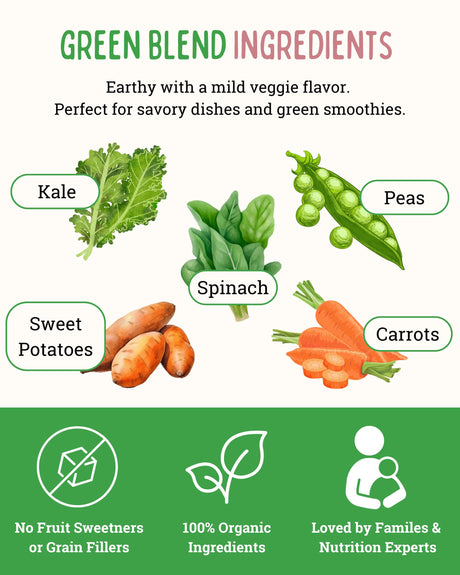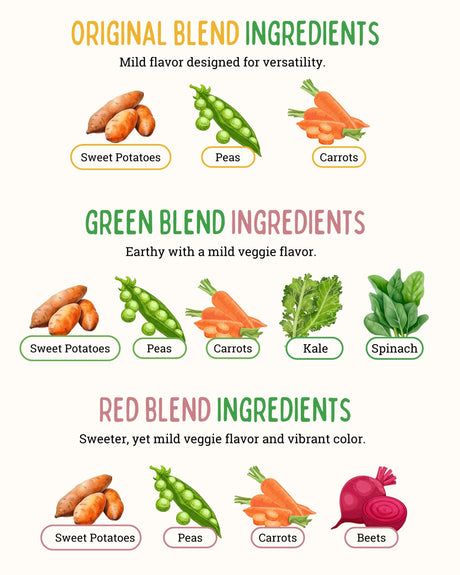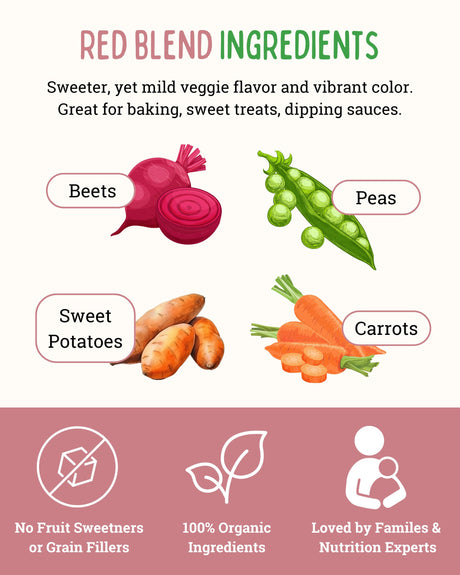Many parents, at some point in their parenting journey, has faced the challenge of a child pushing away a plate of lovingly prepared food. This universal struggle often leaves parents questioning: Why are some children so resistant to certain foods? This guide aims to shed light on the intricate world of picky eating, offering insights and actionable strategies for concerned parents.
The Science Behind Picky Eating
Children aren't just being stubborn when they refuse to eat their greens. There's a science behind their selectiveness.
Biological factors: Children come into the world with a heightened sensitivity to certain flavors. This is largely due to the fact that they have more taste buds than adults, making them more receptive to the intensity of flavors. This natural sensitivity can sometimes lead to aversions, especially to foods that have a bitter or strong taste, such as certain vegetables.
Evolutionary perspective: Historically, being cautious about unfamiliar foods was a survival mechanism. Consuming unknown foods could lead to poisoning or illness. This instinctual caution is still present in children today, making them naturally hesitant to try unfamiliar dishes. It's a protective mechanism that has been passed down through generations.
Environmental and Behavioral Factors
Our environment and past experiences play a significant role in shaping our food preferences, and it's no different for children.
Influence of peers and siblings: Children are highly influenced by their surroundings. Observing a peer or sibling expressing distaste for a particular food can lead them to adopt the same aversion, even without trying the food themselves. School cafeterias, playdates, and family gatherings are all places where children can pick up on others' food preferences.
Previous negative experiences: Past experiences, both good and bad, play a pivotal role in shaping food preferences. A single negative incident, like a stomach ache after eating a certain dish, can lead to a long-lasting aversion. On the flip side, positive experiences, like associating a particular food with a happy memory, can foster a liking for that food.
Parental attitudes and behaviors around meal times: Children often model their behaviors after their parents. If parents show reluctance or distaste towards certain foods, children are likely to develop similar aversions. Conversely, parents who exhibit a diverse palate and a willingness to try new foods can positively influence their children's eating habits.
The Role of Texture and Presentation
Beyond taste, the physical properties of food play a significant role in a child's willingness to eat.
Texture aversions: The feel of food in the mouth can be a significant factor for many children. Foods that are too slimy, gritty, or have an unfamiliar consistency can be off-putting. For instance, while an adult might appreciate the creamy texture of an avocado, a child might find it unappealing.
Making food visually appealing: We often hear that we eat with our eyes first, and this is especially true for children. Turning meals into visually appealing dishes, using vibrant colors, and creative presentations can make a significant difference in their willingness to try new foods. Fun shapes, playful arrangements, and even the inclusion of foods with naturally bright colors can entice a hesitant eater.
Strategies for Introducing New Foods
Introducing new foods to a picky eater can be a daunting task, but with the right strategies, it becomes more manageable.
The "one bite rule": This strategy involves encouraging children to take just one bite of a new food. It's a non-confrontational approach that introduces children to new flavors gradually, without the pressure of finishing an entire serving.
Positive meal times: Creating a relaxed, positive environment during meals can make children more receptive. Avoid turning mealtime into a battleground; instead, make it a time for family bonding. Engaging in conversation, playing soft background music, and ensuring the dining area is comfortable can all contribute to a more positive eating experience.
Engaging children in the cooking process: Involving children in meal preparation can significantly increase their interest in the food. Simple tasks like washing veggies, stirring a pot, or even choosing a recipe can make them feel involved and more invested in the meal.

Hidden Nutrition: Sneaking in the Good Stuff
For particularly stubborn picky eaters, sometimes a little craftiness is necessary.
Innovative recipes: There are countless recipes available that cleverly incorporate vegetables and other nutritious ingredients into dishes children love. Think spinach muffins, vegetable-laden pasta sauces, or smoothies with hidden greens. These dishes ensure children get their nutrients without even realizing it. Or simply add EasyPeasie veggie powder blends to meals, snacks, and smoothies.
Avoid labeling foods as "bad": Creating a "forbidden fruit" scenario can make certain foods more alluring. Instead of labeling sweets as "bad" and vegetables as "good", focus on teaching children about balance, moderation, and the benefits of diverse foods.
Consistency is Key
Introducing a new food once and giving up after rejection is a common mistake. Consistency in offering diverse foods can slowly change a child's palate.
Repeated exposure: Research has shown that it might take multiple exposures for a child to develop a taste for a new dish. The key is to keep offering without forcing consumption.
Celebrate small milestones: Every time a child tries a new food, it's a step forward. Recognize and celebrate these moments to encourage continued exploration. A sticker chart or a small reward system can be effective motivators.
Seeking Professional Help
Sometimes, the aversion to foods goes beyond typical picky eating and might require professional intervention.
When to consult a professional: If a child's eating habits are causing significant concern, such as noticeable weight loss, nutritional deficiencies, or if the child is failing to thrive, it's essential to consult a pediatrician or nutritionist.
Beyond typical picky eating: In some cases, extreme picky eating can indicate underlying issues like sensory processing disorders, anxiety, or other medical conditions. Recognizing these signs early and seeking appropriate intervention is crucial.
Conclusion
Navigating the challenges of picky eating requires patience, understanding, and a lot of trial and error. With the right knowledge and strategies, parents can guide their children towards a diverse and nutritious diet. Remember, every child is unique, and what works for one might not work for another. The key is to stay informed, be persistent, and keep trying.
Additional Resources
For those seeking further guidance, numerous resources can provide additional insights:
Books: "The Comprehensive Guide to Picky Eating" by Dr. Jane Smith, "Children's Nutrition Explained" by Dr. Amy Brown
Websites: ComprehensiveKidsNutrition.org, AllAboutHealthyEatingForKids.com
Support Groups: Many community centers and online platforms offer support groups where parents can share experiences, challenges, and solutions related to picky eating.













